
How to Use RELAY: Examples, Pinouts, and Specs
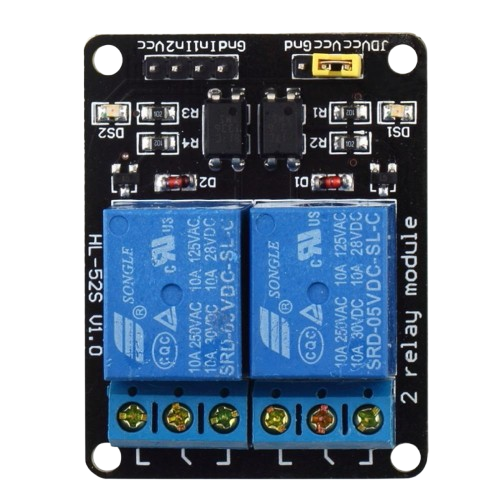
 Design with RELAY in Cirkit Designer
Design with RELAY in Cirkit DesignerIntroduction
A relay is an electromechanical switch that uses an electromagnet to open or close a circuit. It allows a low-power signal to control a higher power circuit, providing isolation and control in various applications. Relays are widely used in automation, home appliances, automotive systems, and industrial equipment to control high-current devices such as motors, lights, and heaters.
Explore Projects Built with RELAY
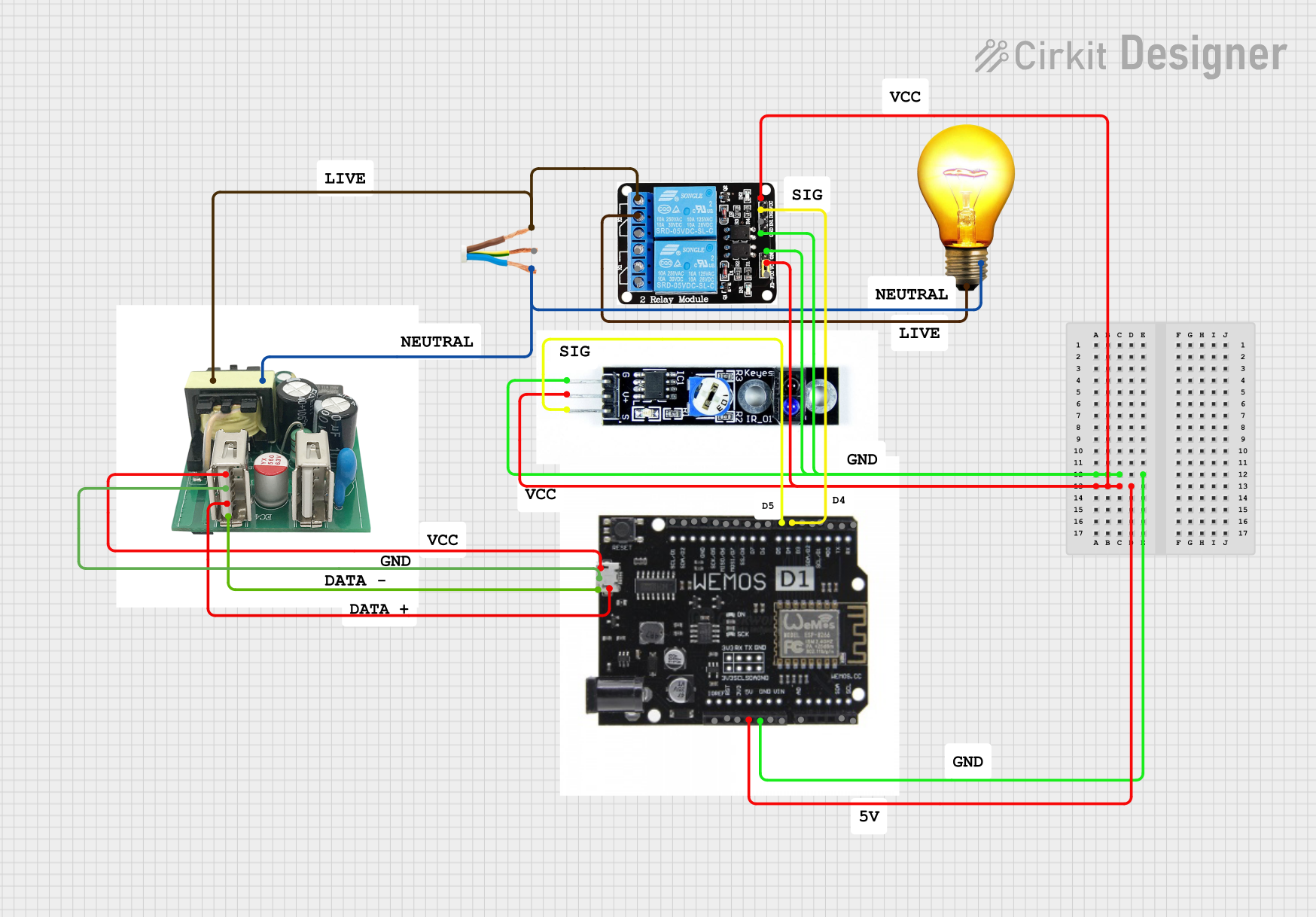
 Open Project in Cirkit Designer
Open Project in Cirkit Designer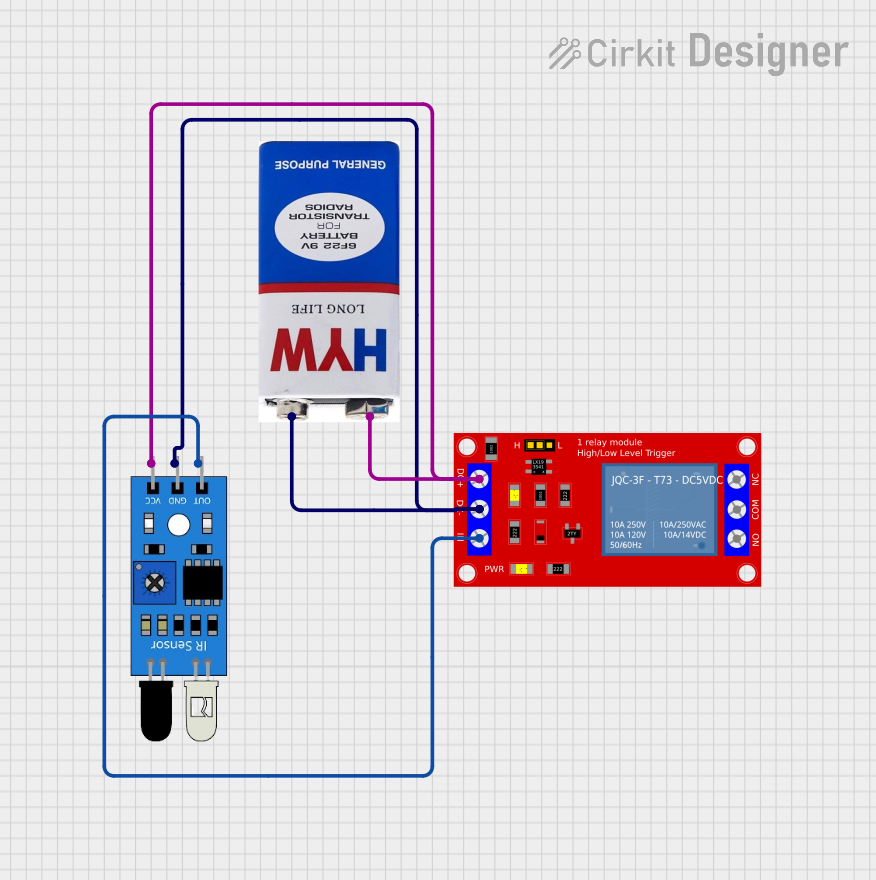
 Open Project in Cirkit Designer
Open Project in Cirkit Designer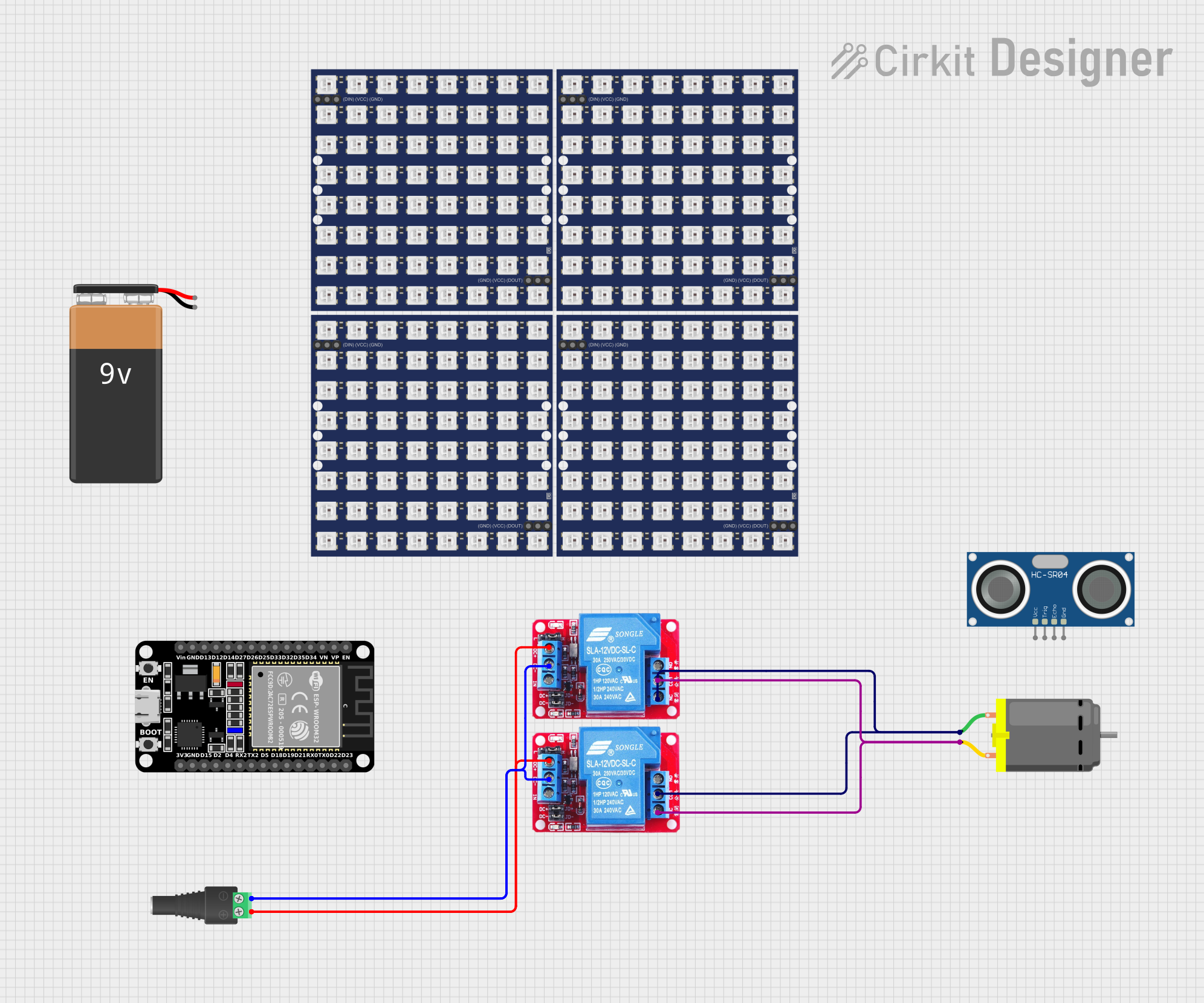
 Open Project in Cirkit Designer
Open Project in Cirkit Designer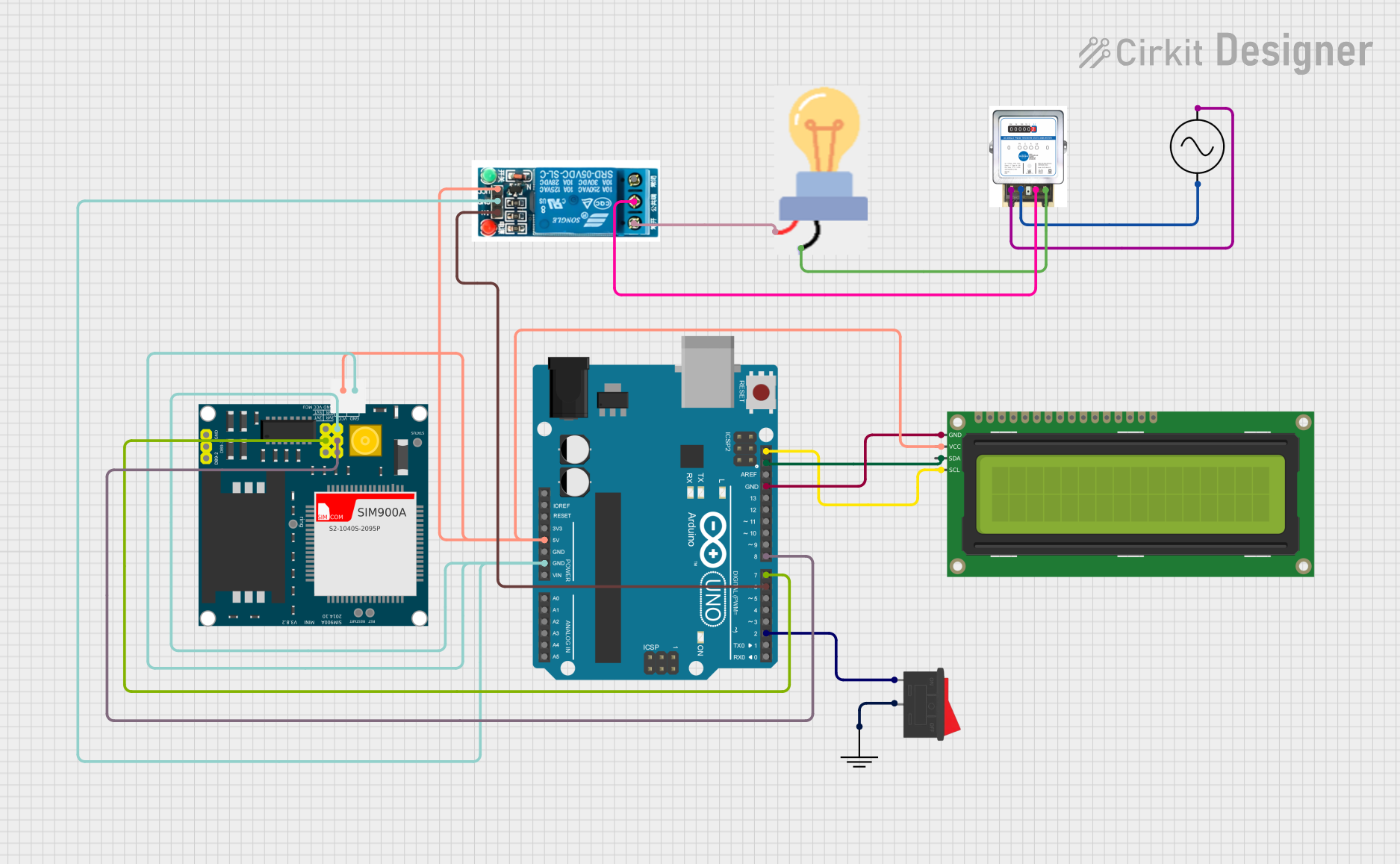
 Open Project in Cirkit Designer
Open Project in Cirkit DesignerExplore Projects Built with RELAY

 Open Project in Cirkit Designer
Open Project in Cirkit Designer
 Open Project in Cirkit Designer
Open Project in Cirkit Designer
 Open Project in Cirkit Designer
Open Project in Cirkit Designer
 Open Project in Cirkit Designer
Open Project in Cirkit DesignerCommon Applications and Use Cases
- Home Automation: Controlling lights, fans, and other appliances.
- Automotive Systems: Switching headlights, horns, and other high-current devices.
- Industrial Control: Managing motors, pumps, and heavy machinery.
- Microcontroller Projects: Allowing low-power microcontrollers (e.g., Arduino) to control high-power devices.
- Safety Systems: Providing electrical isolation between control and power circuits.
Technical Specifications
Below are the general technical specifications for a standard 5V relay module commonly used in electronics projects. Specifications may vary depending on the specific relay model.
Key Technical Details
- Operating Voltage: 5V DC (control signal)
- Trigger Current: ~15-20 mA
- Switching Voltage: Up to 250V AC or 30V DC (load side)
- Switching Current: Up to 10A (load side)
- Contact Type: SPDT (Single Pole Double Throw) or DPDT (Double Pole Double Throw)
- Electrical Isolation: Optocoupler isolation (in some modules)
- Relay Coil Resistance: ~70Ω (for 5V relays)
Pin Configuration and Descriptions
The pin configuration for a typical 5V relay module is as follows:
| Pin Name | Description |
|---|---|
| VCC | Connects to the 5V power supply to power the relay module. |
| GND | Ground connection for the relay module. |
| IN | Control signal input. A HIGH signal activates the relay, and a LOW signal deactivates it. |
| COM | Common terminal for the relay switch. |
| NO | Normally Open terminal. The circuit is open when the relay is inactive. |
| NC | Normally Closed terminal. The circuit is closed when the relay is inactive. |
Usage Instructions
How to Use the Relay in a Circuit
- Power the Relay Module: Connect the VCC pin to a 5V power source and the GND pin to ground.
- Control Signal: Connect the IN pin to a microcontroller (e.g., Arduino) or a control circuit. Use a digital output pin to send HIGH or LOW signals to control the relay.
- Load Connection:
- Connect the device you want to control (e.g., a light bulb or motor) to the COM and NO terminals if you want the circuit to be normally open.
- Use the COM and NC terminals if you want the circuit to be normally closed.
- Isolation: Ensure proper electrical isolation between the control and load sides to prevent damage to the control circuit.
Important Considerations and Best Practices
- Flyback Diode: If you're using a bare relay (not a module), add a flyback diode across the relay coil to protect the control circuit from voltage spikes.
- Power Ratings: Ensure the relay's voltage and current ratings match the load requirements.
- Optocoupler Isolation: Use a relay module with an optocoupler for added safety and isolation.
- External Power Supply: For high-current loads, use an external power supply to power the load side of the relay.
- Avoid Overloading: Do not exceed the relay's maximum current and voltage ratings to prevent damage.
Example: Using a Relay with Arduino UNO
Below is an example of how to control a relay module using an Arduino UNO:
// Example: Controlling a relay module with Arduino UNO
// Connect the relay module's IN pin to Arduino pin 7
// VCC and GND of the relay module should be connected to 5V and GND of Arduino
#define RELAY_PIN 7 // Define the pin connected to the relay module's IN pin
void setup() {
pinMode(RELAY_PIN, OUTPUT); // Set the relay pin as an output
digitalWrite(RELAY_PIN, LOW); // Ensure the relay is off at startup
}
void loop() {
digitalWrite(RELAY_PIN, HIGH); // Turn the relay on
delay(1000); // Keep the relay on for 1 second
digitalWrite(RELAY_PIN, LOW); // Turn the relay off
delay(1000); // Keep the relay off for 1 second
}
Troubleshooting and FAQs
Common Issues and Solutions
Relay Not Activating:
- Cause: Insufficient control signal voltage or current.
- Solution: Ensure the control signal is 5V and the source can supply at least 15-20 mA.
Load Not Switching:
- Cause: Incorrect wiring of the load to the relay terminals.
- Solution: Double-check the connections to the COM, NO, and NC terminals.
Relay Clicking but No Output:
- Cause: Load exceeds the relay's current or voltage rating.
- Solution: Verify the load's specifications and ensure they are within the relay's limits.
Microcontroller Resetting When Relay Activates:
- Cause: Voltage spikes or insufficient power supply.
- Solution: Add a flyback diode across the relay coil and ensure the power supply is adequate.
Relay Module Overheating:
- Cause: Prolonged operation near maximum current rating.
- Solution: Use a relay with a higher current rating or reduce the load.
FAQs
Q: Can I use a 5V relay with a 3.3V microcontroller?
A: Most 5V relays require a 5V control signal. Use a transistor or level shifter to interface a 3.3V microcontroller with the relay.Q: How do I know if my relay is SPDT or DPDT?
A: Check the relay's datasheet or look for the number of terminals. SPDT relays have 5 terminals, while DPDT relays have 8 terminals.Q: Can I control an AC load with a DC relay?
A: Yes, as long as the relay's contact ratings support the AC voltage and current of the load.Q: What is the lifespan of a relay?
A: Relays typically have a lifespan of 100,000 to 1,000,000 operations, depending on the load and usage conditions.